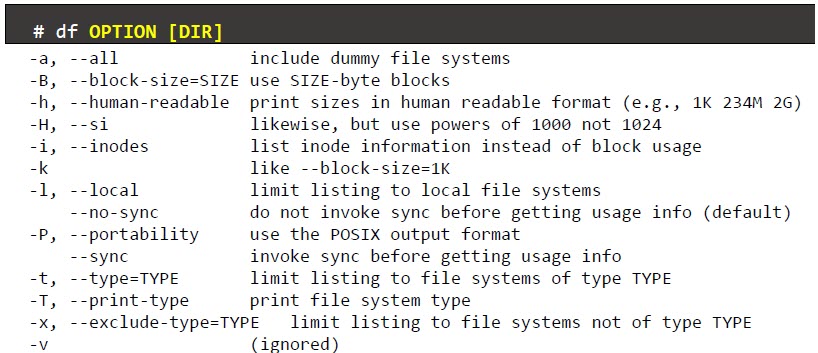
Overview
Utilities support
- The fdisk family: These programs (fdisk, cfdisk, and sfdisk) are text-mode tools that can handle MBR
- GPT fdisk: This family (gdisk, cgdisk, and sgdisk) is modelled after the fdisk family but works on GPT disks
Command
- mount command: to manually attach the device onto a directory location, or mount point

Example:

umount command: detaches the mentioned file system(s) from the file hierachy

mount command without parameter be used to view currently mounted file system, the mount points, and options

mount command with -a option will apply mounting stored in /etc/fstab

- Edit /etc/fstab file


File system specifier: For disk-based file system, either a device file name, a file system label specification
Mount options: A comma-separated list of options that can be used to control mount’s bahavior
Dump frequency: If the dump backup utility is used, the number in this field controls dump’s handling of the specified file system
File system check order: Controls the order in which the file system checker fsck checks the integrity of the file systems
- blkid command
- The blkid command displays available attributes such as its universally unique identifier (UUID), file system type, or volume label

- df command
- df command reports the amount of available disk space being used by file systems

- du command
- du command: short for disk usage, is used to estimate file space usage

- Format file systems

- fdisk command: Check information of hard disk and partition

- How to create new partition
- [hard_disk]: disk you want to create new partition
- Enter m to open action table
- Enter n to add a new partition
- Enter w to save configure



- How to delete partition
- Enter m to open action table
- Enter d to choose delete action
- Enter number of partition you want to delete
- Enter w to save configure


- partprobe command
- partprobe is a program that informs the operating system kernel of partition table changes, by requesting that the operating system re-load the partition table

** If you have difficulty in configuring Sophos products in Viet Nam, please contact us:
Hotline: 02862711677
Email: info@thegioifirewall.com
Leave a Reply